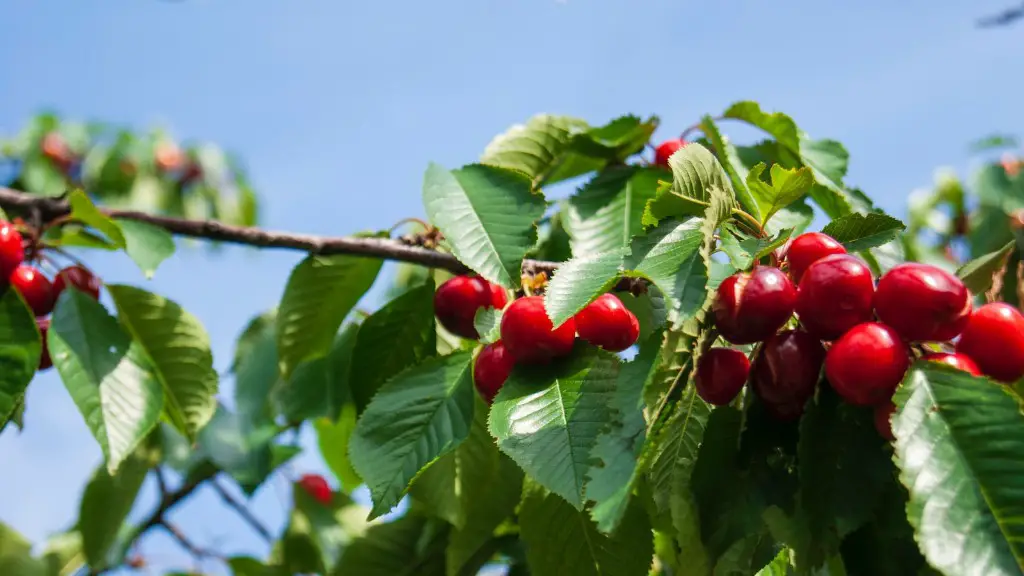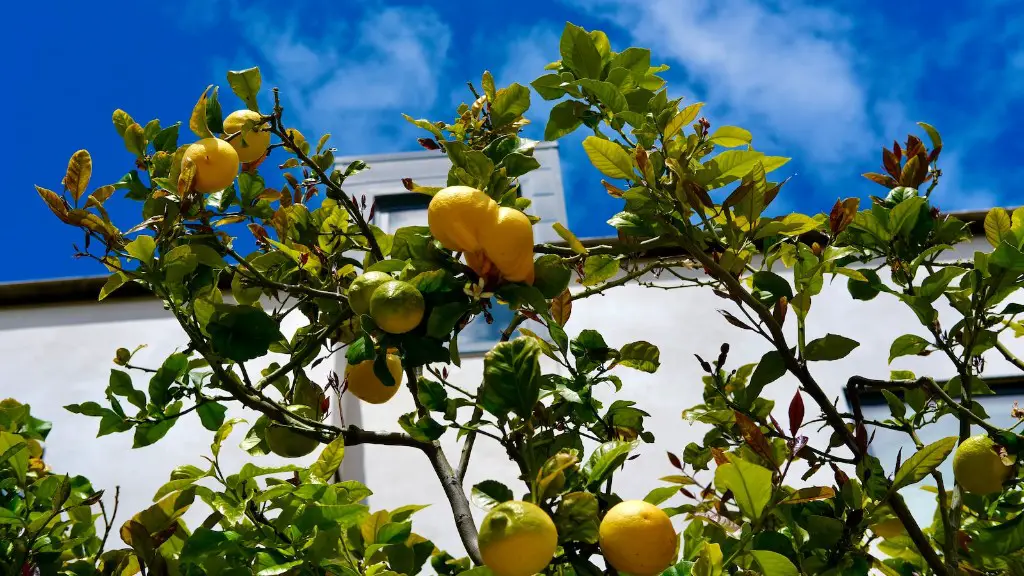How to Treat Fungus on Avocado Trees
Avocado trees are a popular addition to many gardens and they are both a welcome addition to the landscape and an easy to maintain fruit tree.
Avocado trees can suffer from pests and diseases that lead to a decline in the health of the tree and reduce the size of the fruit harvest. Fungal infections are common on avocado trees, and can cause significant damage to the tree if left untreated.
Fungal infections occur when fungal spores are introduced to the tree, normally during wet and damp weather. The spores can infect the leaves, trunk and fruits of the tree, leading to yellowing, discoloration and wilting of leaves and distorted fruit.
Fungal infections on avocado trees can spread quickly and they should be treated as soon as they are identified.
The first step to treating a fungal infection on an avocado tree is to identify the fungus present and what type it is. There are a variety of different fungal infections that can affect an avocado tree, and each one requires a different treatment.
Treating fungal infections on avocado trees will generally involve a combination of chemical and organic control methods. Chemical treatments should be used as a last resort and care should always be taken to ensure that the chemicals are applied according to the manufacturer’s instructions and in a safe manner.
Organic treatments for fungal infections on avocado trees can include the use of natural fungicides that are applied directly to the affected areas of the tree. These may include products such as neem oil and other natural oils which are safe to use and will help to treat the infection.
In addition to the use of chemical and organic treatments, cultural practices can also help to reduce the risk of fungal infections on avocado trees. These practices include pruning infected branches and leaves, maintaining adequate spacing between plants, and ensuring that the trees are properly watered and fertilised.
Finally, it is important to prevent the spread of fungal infections to other avocado trees, as well as other plants in the garden. This can be done by ensuring that all tools used are disinfected and cleaned properly, and by keeping the area surrounding the infected tree as clean and free from debris as possible.
Indentifying Fungus On Avocado Tree
The first step in treating a fungal infection on an avocado tree is to identify the fungus present. Fungal infections can be identified by their characteristic look and feel, as well as the symptoms that they cause in the tree.
Fungal infections on avocado tree leaves are generally characterized by yellowish discoloration, wilting, and a distinctive fungal smell. In some cases, the leaves may also be covered in a grayish-white fungi, as well as small black spots.
Fungal infections on the trunk of the tree are generally easier to identify as they often manifest as large brown spots that can be observed on the bark of the tree. These spots are often discolored, and they may also appear to be sunken.
The fruits of an infected tree may also have signs of fungal infection. The fungus may cause a dark, discolored area on the surface of the fruit, and the fruit itself may be distorted and smaller than normal.
Once the type of fungus present has been identified, the best course of action for treatment can be determined.
Chemical Treatments For Avocado Fungal Infections
Fungal infections on avocado trees can be treated with a variety of chemical treatments. These treatments are generally applied directly to the affected area of the tree, and care should always be taken to ensure that the chemicals are applied according to the manufacturer’s instructions and in a safe manner.
Common chemical treatments for fungal infections include fungicides, which are designed to kill the fungus and prevent it from spreading. There are a variety of different fungicides available, and it is important to choose one that is specifically designed for use on avocado trees.
Chemical treatments should generally only be used when the infection has become severe and organic treatments have failed. It is important to ensure that all safety precautions are followed when using chemical treatments, and that they are not used excessively or in a manner that could cause harm to humans, animals, or other plants.
Organic Treatments For Fungal Infections On Avocado Trees
Organic treatments for fungal infections on avocado trees are a great alternative to chemical treatments. These treatments are generally made from natural ingredients and do not contain any harsh chemicals or toxins.
Organic treatments for fungal infections on avocado trees may include the use of natural oils such as neem oil, which is known for its ability to kill fungal spores. Other natural oils that can be used to treat fungal infections on avocado trees include tea tree oil, peppermint oil, and garlic oil.
In addition to the use of natural oils, a variety of other organic treatments can be used to treat fungal infections on avocado trees. These may include the use of beneficial fungi and bacteria, as well as the use of compost tea and other natural fertilizers.
Organic treatments for fungal infections on avocado trees are generally safer and more effective than chemical treatments, and provide a more natural approach to treating the problem.
Cultural Practices To Help Treat Fungal Infections On Avocado Trees
Cultural practices are an important part of treating fungal infections on avocado trees. These practices include the correct watering and fertilisation of the tree, as well as the removal of infected branches and leaves.
Proper watering and fertilisation of the avocado tree is essential for maintaining healthy growth. Overwatering can encourage the growth of fungal spores and diseases, while under-watering can cause the leaves and fruit to become dry and brittle.
Pruning of infected branches and leaves is an important way to prevent the spread of fungal infections. Pruning should be done carefully and only those branches and leaves that are affected by the fungus should be removed.
Finally, it is important to ensure that the surrounding area of the tree is clean and free from debris, as this can encourage fungal growth and the spread of infections.
How To Prevent The Spread Of Fungal Infections On Avocado Trees
Preventing the spread of fungal infections on avocado trees is important in order to maintain the health of the tree and ensure a good harvest of fruit.
One of the best ways to prevent the spread of fungal infections is to keep tools used on the avocado tree clean and disinfected. This includes pruning shears and other tools that come into contact with the tree.
It is also important to avoid overcrowding of avocado trees when planting. Good spacing between trees will prevent the spread of fungal diseases and will allow air to circulate around the trees, preventing the build-up of moisture which can encourage the growth of fungal spores.
Finally, it is important to keep the surrounding area of the tree clean and free from debris, as this can encourage fungal growth and increase the risk of infection.
Best Practices When Treating Fungal Infections On Avocado Trees
When treating fungal infections on avocado trees, it is important to follow best practices in order to ensure that the treatments are effective and safe.
As with any chemical treatment, it is important to ensure that you read and follow the manufacturer’s instructions carefully when using chemical treatments for fungal infections on avocado trees. These instructions should be followed precisely, and any safety precautions should be taken.
Organic treatments should only be used in moderation, and it is important to ensure that they do not come into contact with any humans, animals or other plants. Natural oils can be a great alternative to chemical treatments, but they should still be used with caution.
When pruning and removing infected branches and leaves, it is important to wear protective gloves and clothing, and to ensure that all tools used are properly cleaned and disinfected afterwards.
Finally, it is important to monitor the tree closely to ensure that the fungal infection does not return and that treatments are effective.
Conclusion
Fungal infections on avocado trees can be a serious problem, and it is important to treat them promptly and effectively to ensure that the tree remains healthy and produces a good harvest of fruit.
The best way to treat fungal infections on avocado trees is to use a combination of chemical and organic treatments, as well as good cultural practices such as pruning and adequate spacing between plants.
In addition, it is important to take the necessary precautions when treating fungal infections, such as wearing protective gear, observing safety instructions when using chemicals, and keeping tools clean and disinfected.




